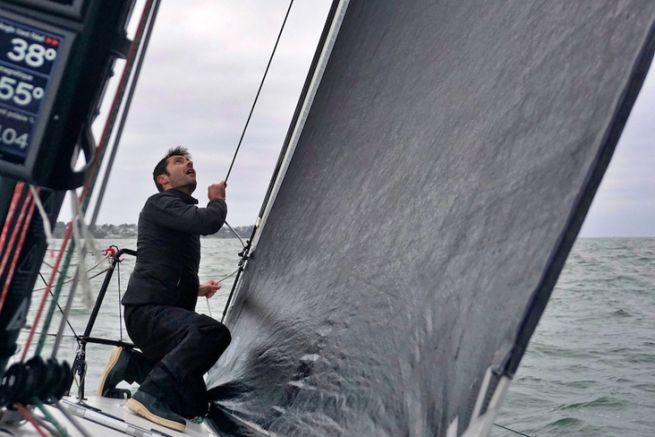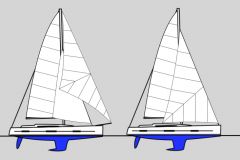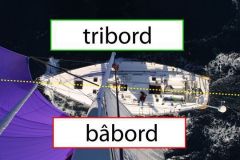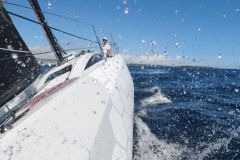For those who are not yet fully familiar with the penons, how they work and their role, we invite you to read or reread our article with the fundamentals.
In order to trim the headsail without making too many mistakes, we have all learned that you have to shock the sheet to the point of flapping and then bend it slightly. The pendulums will be roughly horizontal, but they have a lot to teach us to improve this average trim.
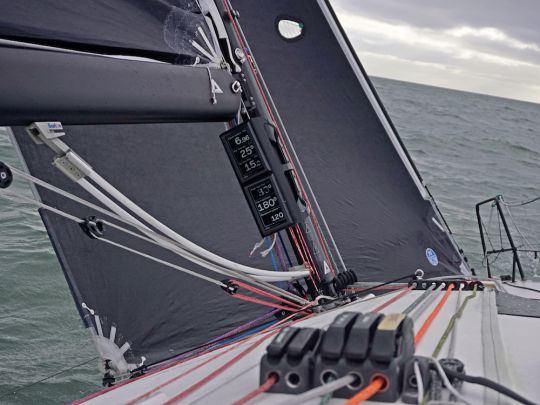
The genoa cart controls the pennons
Consider that the genoa is properly trimmed for upwind: it should react uniformly from bottom to top. When luffing, the lower, middle and upper lower pennons should rise at about the same time. If the upper lower penon rises well before the lower one, you'll probably have to move the cart forward . By closing the leech, the carriage will somehow tuck the top of the sail in harmony with the bottom. This is how the carriage controls the penons.
Be careful with this setting though, as it is preferable that the top of the sail stalls just before the bottom. That's because of the kinking again.. .
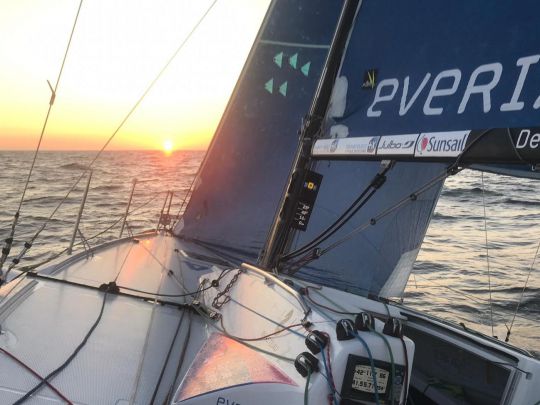
Understanding the language of the penons
In the light wind: the variation in wind speed induces large changes in the angle of the apparent wind, the one that affects us. For the helmsman, it is difficult to maintain a constant angle. In the reefs and calms, the trimmer will help him by regulating the sheeting.
In a laughing stock, the extrados penon stalls, one shocks to preserve the laminar flow. After this, the boat should be tucked in gradually as the helmsman adopts the new apparent wind angle.
In a lull, the apparent wind shifts forward and the intrados penons rise. One can stay a little overhung for a few moments to keep the sail full and slow down (normal, the wind has weakened). Then, you shock as the coxswain falls and takes the new apparent wind angle.
In the medium: the game is to trim the sail as much as possible without killing the speed of the boat. As always, the golden rule is: speed first, course second . The rigging often determines how much tucking you can do. But the pennons can still indicate whether the winch has been abused. If the top and bottom toggles come off at the same time, you've gone too far. If you let go two or three centimetres of sheet, the boat will accelerate and the helmsman will feel more at ease.
In the breeze We stop reading the penons and listen to the lodging..
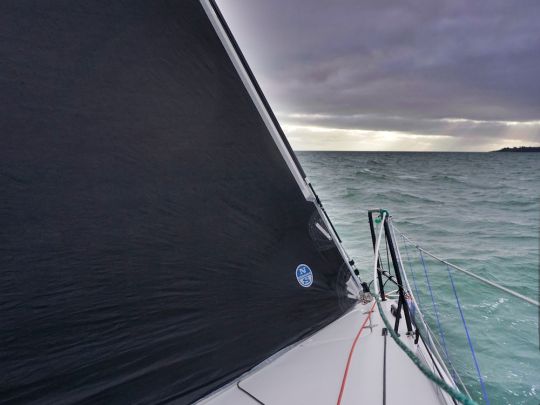
Steer at the meadow with the penons
To sail efficiently upwind, you need to be able to observe the penons properly. On some cruising boats, the position of the steering wheel prevents the penons from being read. Sometimes, the only solution is to steer downwind, which is pleasant in light winds but not recommended in breezy conditions.
Once you have the penons in your sight, the game is pretty simple:
- For maximum power, the penons should be horizontal.
- If the extrados penon falls off, you have to luff it.
- If the intradosal penon goes up, you have to shoot.
In medium wind and with good speed, it is quite normal to steer with the lower leeward penon raised at 45° and the leeward penon horizontal
In the light wind, let us remember the saying again, "Speed first, course second." . You should not caper too much (intrados penon which rises), you will choose to fill the genoa by making sure that the penons are horizontal, even that the extrados is at the limit of the detachment.
In general, by facility, the bottom of the genoa is observed. In the calm, it is better to look at the mid-height of the genoa rather than the bottom, which is easily unhooked. For the vision of the genoa and the heel, it is time to steer downwind.
In the breeze the penons are of little importance, it is the lodge that dictates its law. When a gust hits the boat, we no longer take care of the pennons, we let the boat go upwind while maintaining the same angle of heel. The pennons on the underside of the boat will rise as if to indicate tucking or lowering, but you'll stay focused on heel and speed. This is called "piping in the wind"

 /
/ 